Things You'll Need
Sharp knife
Cutting board
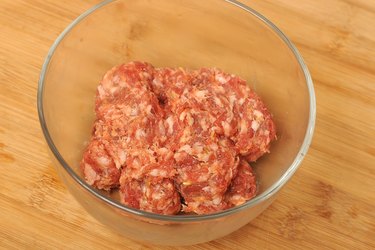
The casings that give sausages their shape also usually edible, providing an outer surface that can be browned and crisped during cooking. In some cases, as with knackwurst, the snap of the skin as you bite into it forms a part of the sausage's time-honored appeal. Still, there are times when you might wish to remove the casing. You might need loose sausage for a recipe or simply not like the texture of the casings. And some artificial casings are simply inedible.
Peeling Uncooked Sausage
Step 1
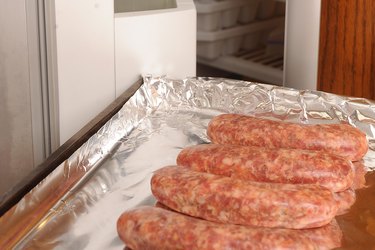
Arrange your sausage links in a single layer in your freezer, with enough space between them that they won't stick together as they chill. Freeze the links for approximately 15-20 minutes, depending on your freezer, until they just begin to become firm. This step is optional, but prevents the sausage meat from sticking to the casings as you work.
Video of the Day
Step 2
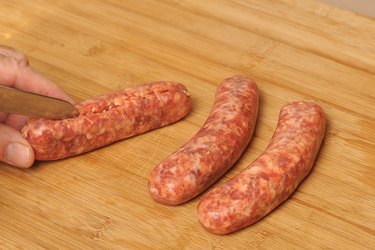
Lay the sausages on a clean cutting board. Hold your sausage firmly in place. Make a long, shallow slash with the tip of a sharp knife that pierces the casing but doesn't cut directly into the sausage.
Step 3
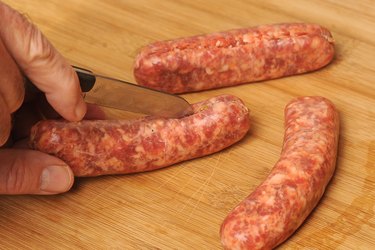
Repeat for any remaining sausages. If you're peeling a large quantity, keep them cold in your refrigerator and take out only four or five at one time.
Step 4

Grasp the split casing at one end with the thumbs of each hand and roll it off the end of the sausage as if you were removing a child's sock. If the sausage is still partially frozen, it will slide easily from the casing. If it is warmer and slightly sticky, you might need to scoop stuck-on sausage from the casing with your finger, a wooden spoon or a nylon spatula.
Step 5
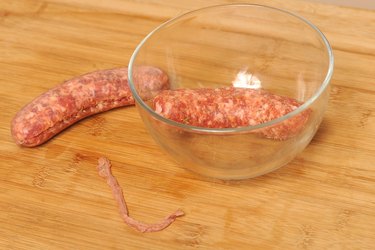
Continue slashing and peeling until your sausage meat is all freed, transferring the loose sausage meat to a pan or mixing bowl as you work. Use the sausage immediately, or cover and refrigerate until it's time to prepare your meal.
Video of the Day
Peeling Par-Cooked Sausage
Step 1
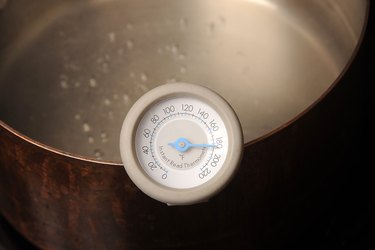
Half-fill a saucepan with water or broth, and bring it to a gentle simmer. If you have an instant-read kitchen thermometer, a temperature of 180 to 195 degrees Fahrenheit is ideal.
Step 2
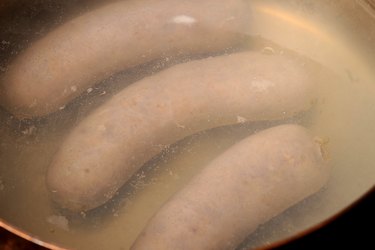
Slide your sausages into the hot liquid, three or four at a time. Poach them gently in the water for just 2 to 3 minutes, until the outer layer of sausage becomes firm and develops a cooked appearance.
Step 3
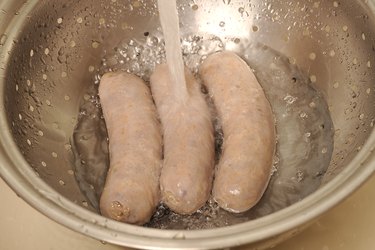
Remove your sausages from the simmering liquid with a slotted spoon, and immerse or rinse them in cold water for 30 to 60 seconds to stop them cooking. Blot the sausages dry with clean paper towels.
Step 4
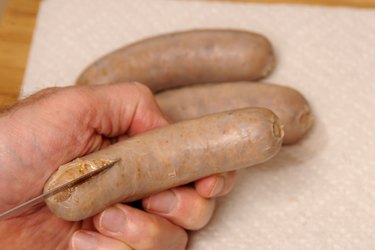
Snip the links to separate them, if they remain connected. Insert the tip of a sharp knife into the casing, with the blade facing up. Pressing gently against the casing, slide your knife the length of the sausage to split it open and free the meat inside. If you work carefully, you can remove the casing without marring the appearance of the sausage.
Step 5
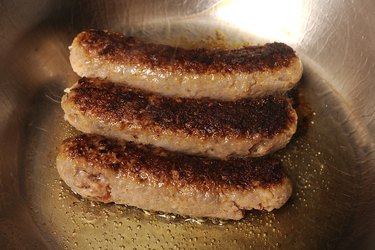
Poach, grill or pan-fry the sausage carefully, so it holds its shape and appearance. Alternatively, crumble the sausages and cook the loose meat according to your favorite recipe.
Deli Sausages with Non-Edible Casings
Step 1
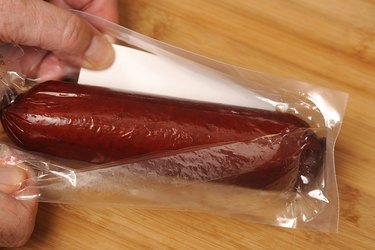
Place your section of deli sausage on a clean cutting board, and remove any plastic or mesh over-wrap that might be present.
Step 2
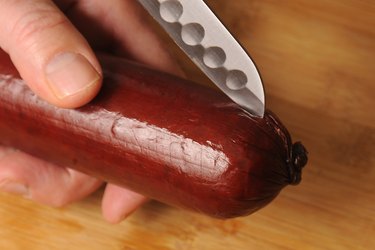
Score the sausage with the tip of a sharp knife, cutting just deeply enough to penetrate the casing. If you cut too deeply, the marks will be visible on your finished slices.
Step 3
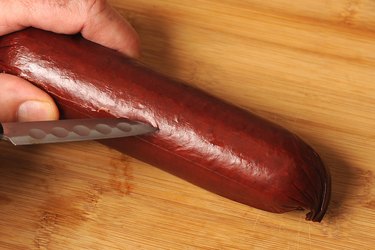
Loosen one side of the casing by sliding the point of your knife beneath it, then running it the length of the sausage.
Step 4
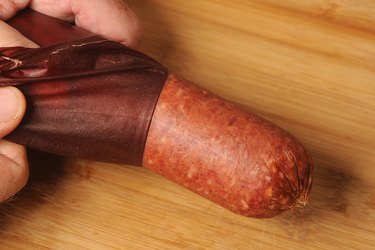
Grasp the casing firmly, once you've freed a large enough piece to get a good grip. Peel it away from the sausage, slowly and firmly, using the tip of your knife to free the casing from the underlying meat if it should stick at any point.
Step 5
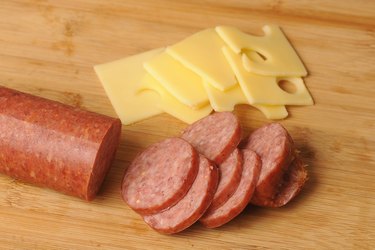
Continue to the end of the sausage, removing and discarding the inedible casing. Slice the sausage thinly for sandwiches and cold-cuts platters, or cut it into thicker pieces for cooking.
Tip
If the uncooked sausage freezes slightly longer than you'd intended, it might cling to the casing. In that instance, either hold it in your hand for a moment to warm it -- just slightly -- or run it under lukewarm tap water for a few seconds. The casing should peel off easily.
As a rule, the driest sausages peel the most evenly. Soft, high-moisture sausages such as Italian sausage are relatively messy to peel when completely uncooked. The poaching method firms the surface layer of meat and makes it relatively easy to remove the skin. The sausage can then be broken up and browned as loose sausage meat, if that's your goal. If the sausage will be crumbled anyway, don't worry about marring it with your knife when you slit the casing.
If your deli meat is in a natural casing, it can be easier to remove if it's slightly softened first. Wrap your piece of sausage in damp paper towel for a few minutes before peeling it, to make it more supple and less prone to ripping and breaking as you work.
Some hot dogs and other pre-cooked sausages are sold in clear plastic tubes, more a sort of individual packaging than a casing as such. These can simply be snipped at one end, then peeled off.
Warning
Sausage peeled by the par-cooking method must be cooked immediately. They won't remain food-safe if you attempt to chill them and finish cooking them at a later time.